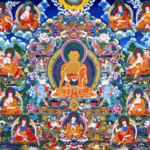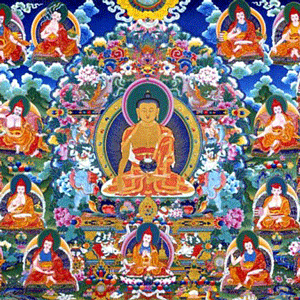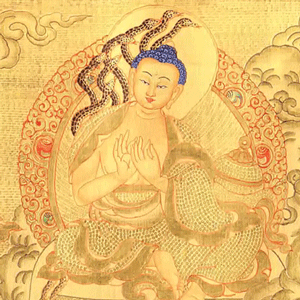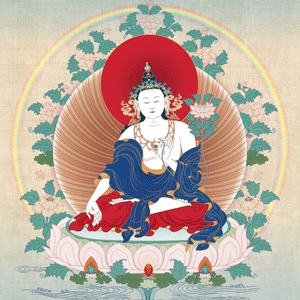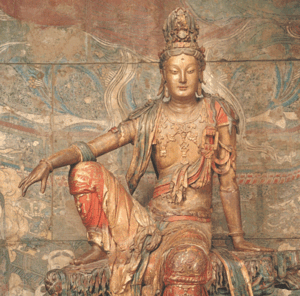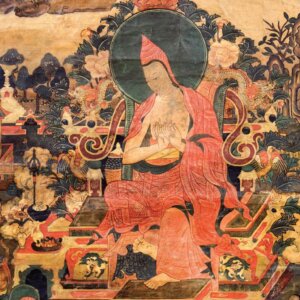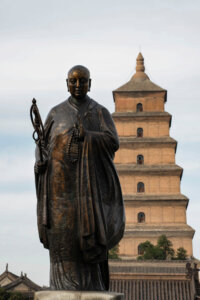Indian Mahayana Masters from the 2nd-8th Centuries
The Tibetan traditions all look back to India as the source of wisdom. There were countless masters all over India, north and south, east (including present-day Bangladesh) and west (including present-day Pakistan). The Mahayana reached its full expression during this period, and what follows is a partial but growing list of Reader Guides to these masters.
The Seventeen Pandits of Nalanda
2nd through 11th centuries
Tibetan Buddhism is none other than the Buddhism of India in the tradition of Nalanda, the great center of Buddhist learning that was located in present-day Bihar, India. There are seventeen great scholars profiled here, including Nagarjuna, Aryadeva, Asanga, Vasabandhu, Buddhapalita, Dignaga, Bhavaviveka, Vimuktisena, Chandrakirti, Dharmakirti, Shantideva, Shantarakshita, Kamalashila, Haribhadra, Gunaprabha, Shakyaprabha. and Atisha.
Nagarjuna
(2nd century....and beyond)
The great master closely associated with the Perfection of Wisdom
Shantideva and the Way of the Bodhisattva
8th century
The great master Shantideva is the author of two very important texts. The first is the Śikṣāsamuccaya, or Training Anthology which is a compilation of many works. The second is the Bodhicharyavatara, or Way of the Bodhisattva. This Reader Guide focuses on the latter work.
Asanga
4th century
The great Mahayana figure who is a key explicator of Yogacara, and also received the Five Maitreya texts from Maitreya.
Xuanzang (602-664 CE)
7th century
While not an Indian master, we wanted to include Xuanzang, certainly one of the most important figures in Buddhist history. His 16 year pilgrimage from his home in China throughout the Buddhist world is almost The Odyssey of the Buddhist literature. His translation and preservation of texts, as well as the account of his journey, had come down to us through the ages and is well worth a deep exploration.

